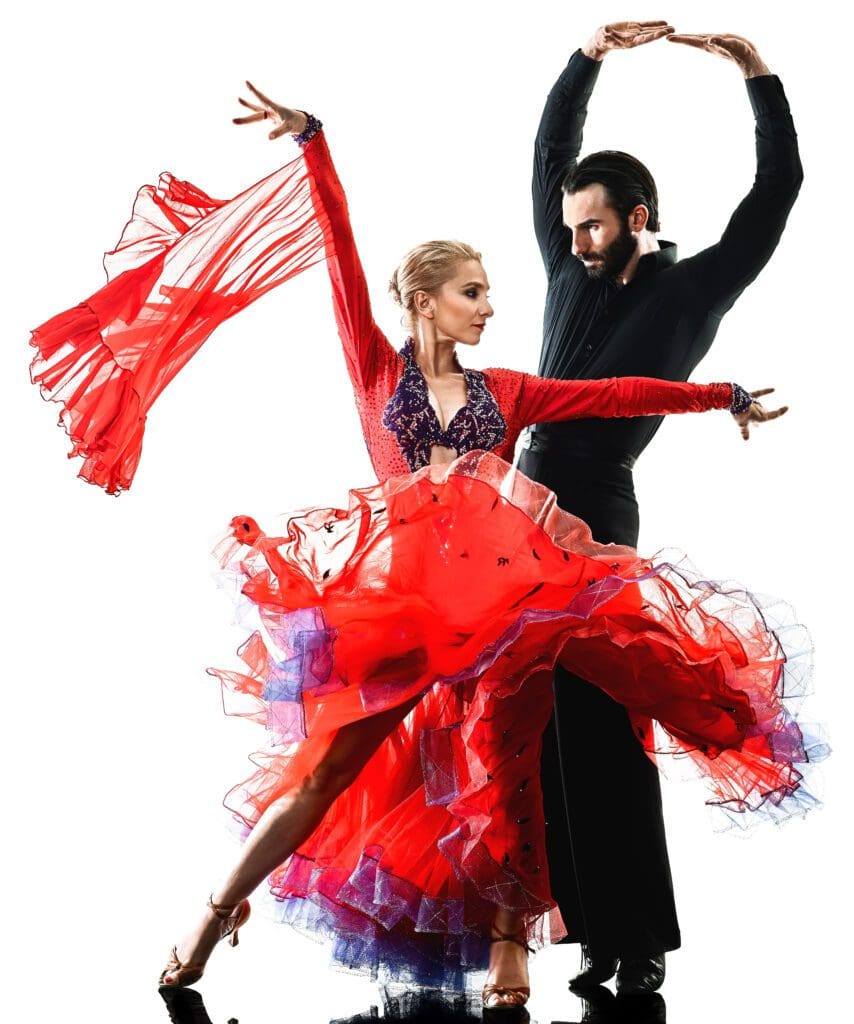Paso Doble
Paso Doble History
Paso Doble, a dramatic and theatrical dance, has its roots deeply embedded in Spanish culture:
Spanish Origins:
- Paso Doble originated in Spain and is heavily influenced by Spanish bullfighting.
- The dance imitates the movements of a bullfight, with the lead playing the role of the matador and the follower often embodying the matador’s cape, a bull, or even a flamenco dancer.
Early 20th Century:
- The dance gained popularity in France and then spread to other parts of Europe in the early 20th century.
- It was initially performed in military parades and at public functions.
Ballroom Adaptation:
- Over time, Paso Doble evolved into a competitive ballroom dance, becoming part of the International Latin dance competitions.
- The ballroom version emphasizes strong, dramatic body movements and poses, capturing the essence of the Spanish bullfight.
Characteristics and Popularity:
- Paso Doble is characterized by its bold, theatrical movements, sharp poses, and staccato footwork, often performed to the characteristic march-like music.
- While not as widely danced socially as other Latin dances, it remains a favorite in competitive dancing for its dramatic flair and theatricality.
In summary, Paso Doble originated as an interpretation of Spanish bullfighting and evolved into a dramatic and stylized ballroom dance, known for its powerful movements and strong, dramatic character.
Paso Doble Characteristics
- Paso Doble is a dramatic, theatrical dance characterized by bold, expressive movements that mimic Spanish bullfighting. The lead represents the matador, while the follower often symbolizes the cape or bull. It’s known for its strong poses, staccato footwork, and commanding presence. The dance is performed to march-like music, emphasizing power and precision, making it a captivating and intense performance piece.
Paso Doble Music Information
Paso Doble music, integral to the dance’s dramatic and theatrical nature, has distinct characteristics:
Rhythmic Structure: The music has a strong, march-like rhythm, emphasizing the bold and dramatic movements of the dance.
Time Signature: It is typically composed in a 2/4 time signature, providing a quick tempo that contributes to the dance’s energetic and brisk style.
Instrumentation: Paso Doble music often features brass instruments, creating a powerful and triumphant sound reminiscent of Spanish bullfights.
Dramatic Phrasing: The music is characterized by dramatic phrasing and crescendos, mirroring the theatrical and story-telling aspects of the dance.
Mood: The overall mood of Paso Doble music is assertive and commanding, reflecting the dance’s inspiration from the drama and pageantry of Spanish bullfighting.
These elements combine to give Paso Doble its unique and compelling musical atmosphere, driving the dance’s strong, expressive movements and dramatic character.
